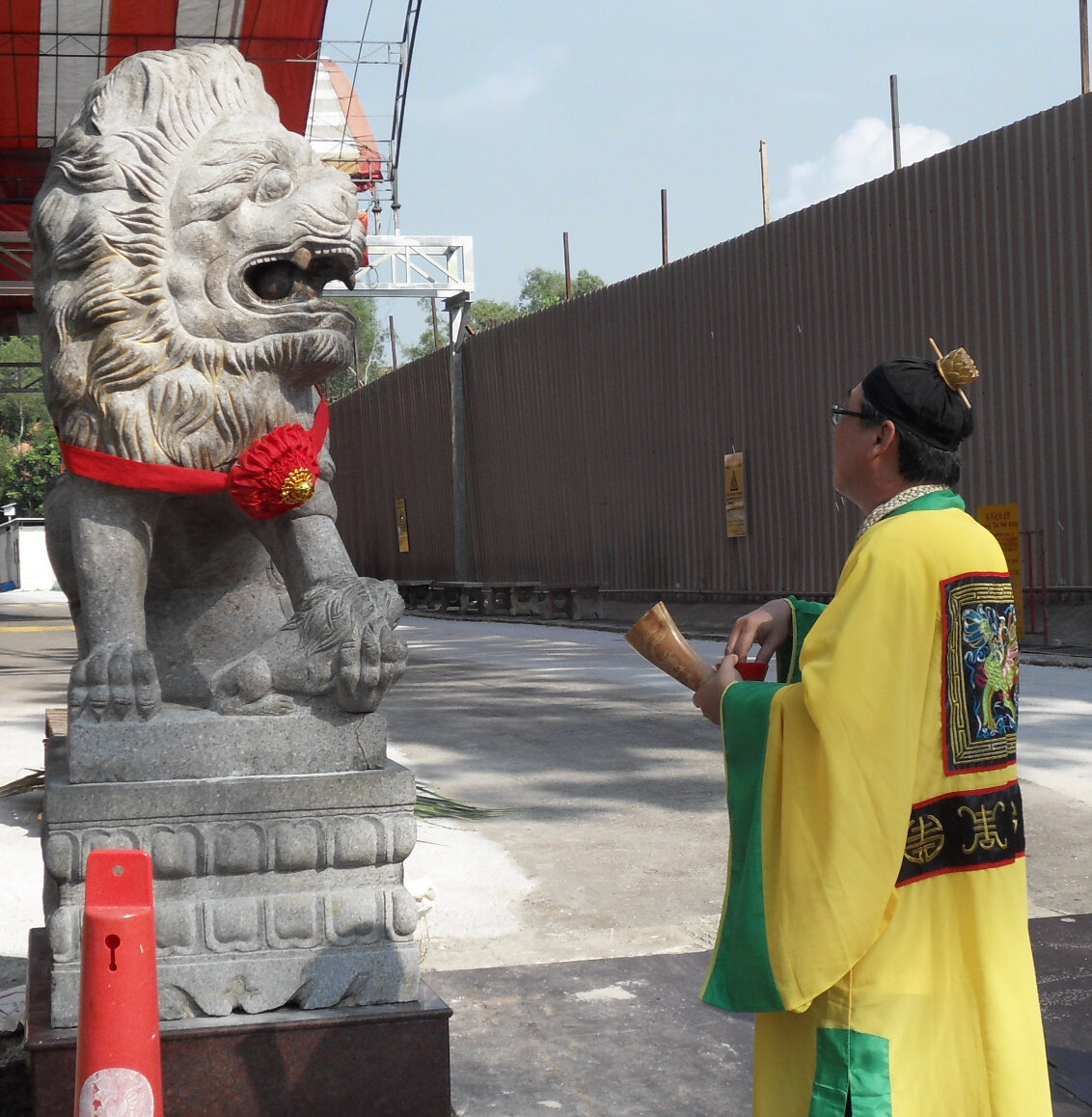Research
Research
Anonymous, Chart of Inner Landscape (Neijing tu 內景圖), Print Block, Clay, White Cloud Monastery (Baiyun guan 白雲觀), Beijing. Photography Taken by Tobias Benedikt Zürn
Detail, Warp-Faced “Silk Figured Plain Weave,” Han Dynasty, 9.5 x 6.4 cm. Philadelphia Museum of Art: Purchased with the Bloomfield Moore Fund, Ref. No. 1934-2-2.
Writing as Weaving: Intertextuality and the Huainanzi’s Self-Fashioning as an Embodiment of the Way
My dissertation “Writing as Weaving: Intertextuality and the Huainanzi’s Self-Fashioning as an Embodiment of the Way” re-evaluates the current treatment of the Huainanzi, a text that Liu An, the king of Huainan, presumably presented in 139 BCE at his inaugural visit to his nephew Emperor Wu, as a collection of philosophical treatises. It showcases how the authors of this highly intertextual scripture fashioned the text as a powerful manifestation of the Way (dao). In the first part of the dissertation, I demonstrate that the Huainanzi employs at least the three images of a tree’s root, a chariot wheel’s hub, and a weaving texture that are commonly associated with the cosmos and the power of the Dao to create a homology between the Liu clan’s scripture, the sage, and the Way. Hence, I propose that the authors of the Huainanzi apparently fashioned the text in image of the force that underlies the organization of the universe. In the second part of the dissertation, I demonstrate with the example of weaving that the Huainanzi does not only contain passages that depict the text in homological terms with the Way. Based on a perceived correlation of the practices of writing and weaving during the Han dynasty, I suggest that the producers of the Huainanzi in fact implemented the cosmic process of weaving in the scripture’s design and intertextual writing practice. In other words, by inserting and connecting various traces of the words of pre-Han writers in its texture, the Liu clan’s scripture presents itself both as being in image and as an embodiment of the Way and its powers—of the very force that connects and weaves together the celestial patterns and terrestrial forms into a cosmic texture. Consequently, I finally speculate that the authors of the Huainanzi might have created the Liu clan’s scripture in image and as an embodiment of the Way in order to produce a textual artifact that belongs to the universally resonating category of the Dao, which underlies the order and orchestration of the universe.
Detail, Lo Ch’ing 羅青, A Pre-Mature Birth of an Ink Butterfly 提前化作墨蝴蝶, 2007, Ink and Color on Paper, 137 x 68 cm, Private Collection
Global reception of the classic zhuangzi
The classic Zhuangzi 莊子, a collection of sayings and anecdotes traditionally attributed to Zhuang Zhou 莊周 (trad. 369-286 BCE), has deeply influenced cultural life in East Asia and beyond. A key text in East Asian religious and literary history, it is still routinely cited in diverse discussions of ethics and philosophy, and informs practices from calligraphy to landscape painting. Despite its importance in East Asia, classrooms and journals around the world rarely engage the text’s influence over the last two millennia. Today, we tend to read the Zhuangzi as a literary expression or through the lens of the academic disciplines of philosophy or religious studies. In this international research project on the global reception of the Zhuangzi, we are bringing together experts on the classic’s reception history to talk about the multifarious responses the Zhuangzi has triggered throughout the last two millennia. In other words, we show that the text has been multivocal and mutable over history, resisting narrowly defined categories and academic disciplines.
Daoist Master Performing Ritual in Front of a Guardian Lion (shishi 石獅), SIngapore. Photography Taken by Tobias Zürn in 2013. © Tobias Benedikt Zürn.
Daoist Ritual Theory
The Chinese traditions known under the umbrella term of Daoism remain a rich resource for the study of ritual. Over the last two millennia, various Daoist communities developed not only a great variety of ritual practices, but also a vast corpus of scriptures that contain elaborate illustrations and reflections upon ritualistic performances. In this project, we explore some of these materials by introducing Daoist vocabulary related to discourses of ritual and the body.




